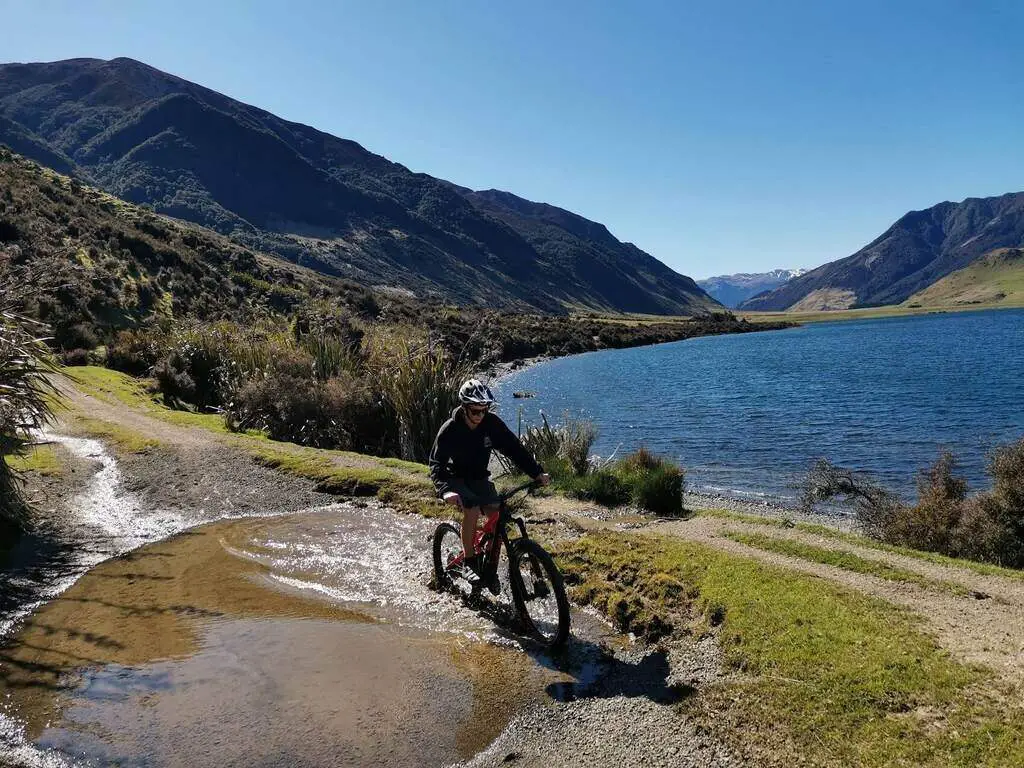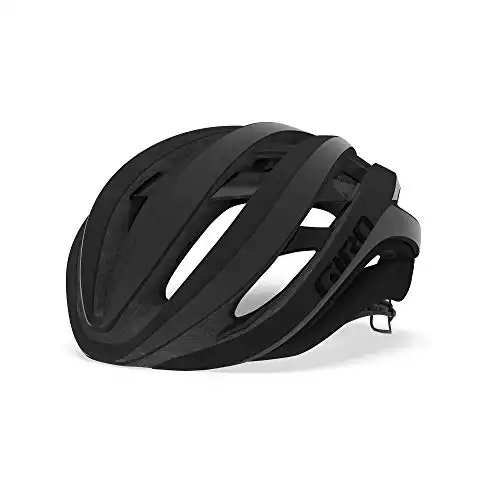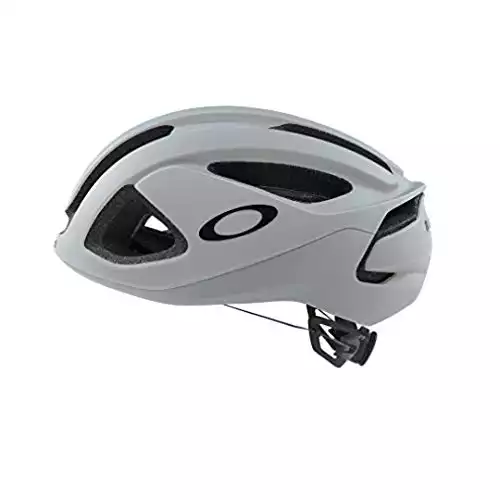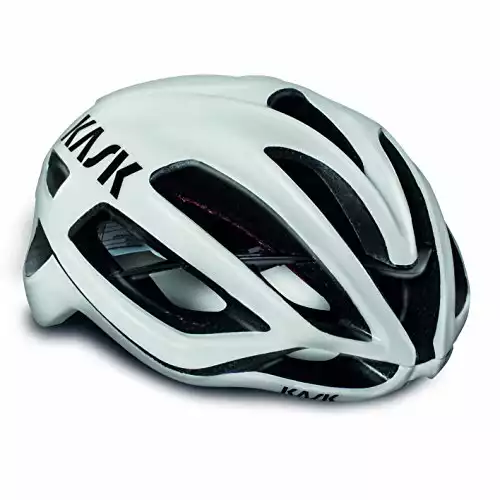If you are a cross country rider, or wanting to ride a little more cross country, this list of best cross country mountain bike helmets is for you.
Cross Country racing is just non-stop effort. It’s hard work, you get hot, all while trying to not come off. So, what you need is a helmet that will keep your head protected, maintain superior ventilation, and be comfortable while you are out riding.
What to look for in an XC mountain bike helmet?
It’s pretty simple- there are three things that are most important in an XC helmet, and that is protection, ventilation and aerodynamics. But you also want it to be lightweight, comfortable, and fit well on your head.
1. Protection
Protection comes from the structure of the helmet and the presence of any anti-rotational system. Starting with the structure of the helmet, you can have in-mold helmets which bind the outer polycarbonate shell to the inner EPS foam layer to create a stronger, lighter, more durable structure. You can also have helmets that are not in-mold, which isn’t as common in XC helmets these days as in-molded helmets have so many benefits.
You can also have single and dual-density helmets. A single-density helmet just has one layer of EPS (Expanded Polystyrene) foam, which is very good at dissipating energy but can only withstand a single impact, so you have to replace it after each crash.
A dual-density helmet has two foam layers- one of EPS and another of EPP (Expanded Polypropylene). The EPP is better at reducing the energy of low-speed impacts and can withstand multiple impacts before needing to be replaced. A dual-density helmet is likely to be much more expensive.
Anti-rotational systems are vital pieces of technology, which sit inside the helmet against your head and reduce the energy from rotational impacts. They typically work by rotating slightly, increasing the duration of the crash, hence reducing the force transferred to the rider’s head. Common anti-rotational systems include MIPS, SPIN and WaveCel.
The helmet needs to fit well for the protection to work in the way that it should. A good helmet will have some sort of retention system which tightens the helmet symmetrically, ensuring that there are no pressure points against the head.
2. Ventilation
Ventilation is crucial to the rider’s comfort when riding XC. Good ventilation helps keep your head cool and manages the sweat that is produced when racing around the trails. Internal channeling is common these days, where intake vents feed air through to the exhaust vents around the back, which gives airflow across the tops of the head. Ventilation on an XC helmet is much the same as on a road bike- large open vents to allow as much air in as possible.
3. Aerodynamics
Just like on a road helmet, a cross country helmet needs to be aerodynamic. This means no visors for the XC helmet if you are racing! The rounded shape of the helmet also leads to increased aerodynamics. However, if you aren’t racing and just tend to like riding the XC trails, aerodynamics isn’t crucial, and the presence of the visor is fine.
Best Cross-Country Mountain Bike Helmets
POC Octal X SPIN Review
Specifically designed for off-road use, the POC Octal X is designed for those wanting extra protection while being light and cool.
Pros
- SPIN technology
- Aramid and Unibody construction
- More coverage than a road helmet
- Very light
- Eyewear storage
Cons
- Straps have minimal adjustment
- Looks quite bulky
Weight: 250 g
Designed especially for off-road use, the POC Octal X SPIN looks much like a road helmet but covers slightly more of the back of the head and comes down a little lower near the ears. This gives it a little more protection without becoming heavy or poorly ventilated. It is certainly not a low-profile helmet, but it is definitely aero and has so many vents it could be in contention for the airiest helmet on the market. The Octal X does not have a visor but does have an ‘eye garage’ to keep the sunglasses in place.
It has POC’s anti-rotational technology, SPIN (Shear Pads INside), to protect your brain from angular impacts. The Octal X has a unibody shell and used aramid bridge technology, which works to both increases the strength and durability of the helmet without increasing the weight of the helmet.
Scott Centric Plus Review
With all the latest and greatest technology, the Scott Centric is an incredible helmet for any XC rider.
Pros
- MIPS
- In-mold technology
- Aerodynamic
- Halo Fit fastening system
- Anti-bacterial padding
Cons
- No glasses storage
Weight: 220 g
Developed for both road and mountain bikers, the Scott Centric Plus is a cleverly designed helmet tailored to meet the needs of riders wanting to go fast. Using technology such as in-mold and micro-shell construction, the Centric plus is able to have larger vents and provide a great integration of aerodynamics, ventilation and safety.
The helmet is incredibly comfortable and has an exceptional retention system to ensure the fit is right for you- which even considers the areas of peak blood flow and high nerve density to make sure contact points are the most comfortable they could be. The Scott testing system worked out that it is 2.2 times cooler than a bare head and is aero optimized, so you practically don’t lose any watts while racing.
Giro Aether MIPS Review
A no expenses spared kind of helmet, with top-of-the-line technology and looks.
Pros
- MIPS Spherical
- Lightweight
- Excellent ventilation
- Eyewear docking port
Cons
- Expensive
Weight: 250 g
While the Aether was designed for the road, its benefits of exceptional breathability, lightweight, and the MIPS Spherical protection make it ideal for XC racing too!
MIPS Spherical is an incredibly cool new technology, where instead of having a plastic liner inside the helmet creating the slip plane, the outside of the helmet moves relative to the inside of the helmet. This means you get two layers of foam, with no plastic liner obstructing the ventilation and no extra weight. The helmet also has a transparent ‘Aura’ arch, which adds a fair bit of structural reinforcement to the helmet structure.
Giro has not forgotten any detail with the Aether. There are rubberized eyewear docking ports, so glasses won’t be slipping off too easily. The Roc Loc 5+ air retention system works to ensure a comfortable and perfect fit.
This is an excellent helmet, and has certainly earned its position in the best cross country mountain bike helmets!
Oakley ARO3 MIPS Review
The ARO3 is a light weight and well ventilated helmet, with good protection measures and functionality, for a very reasonable price.
Pros
- Great Value
- BOA fitting system
- MIPS
- Great ventilation system
Cons
- Moves around a little
- No hair port at the rear
Weight: 300 g
The Oakley AR03 is a high-end helmet, at a much lower price. Designed for the road, the AR03 has made appearances in the XC world due to its outstanding ventilation, comfort and safety performances.
The most standout feature of the helmet is the BOA 360 fitting system, which uses thin laces to ensure the fit of the helmet is optimal. The only niggle with this is the limited size of the ‘hair port’, so it is a slight struggle to loop hair through. Not a major, really, especially if you don’t have a pony-tail to deal with! MIPS comes as standard in the helmets which is necessary for XC racing!
Oakley has added in a few little extras, including the X-Static padding, which resists the growth of bacteria and hence odor build-up. There is an eyewear docking system to hold your glasses when they aren’t needed.
Kask Protone Review
Sleek, stylish and functional. You know it is a good helmet when the Tour de France winners are riding with it!
Pros
- Incredible aerodynamics
- Looks good
Cons
- Limited rear coverage
- No anti-rotational system
Weight: 230 g
One of the more expensive helmets in this list, but if you want to look flashy, the Kast Protone is the way to go. It looks incredible, comes in around 15 different color combinations, and claims to have the lowest amount of drag of any ventilated helmet on the market at the moment.
Kask was originally designed for Team Sky (think Tour de France), so it is certainly an aerodynamic helmet. It uses in-mold technology and an inner frame to create a very slimline helmet without sacrificing protection in any way.
The fitting system has been designed well to make sure there will be no slipping of the helmet and feels very snug around the head. The coverage around the rear of the head is pretty limited, even for a road helmet, which helps keep the head cool but means less protection in a crash.
Is there a difference between road and XC mountain bike helmets?
There isn’t a large difference, and you will often find XC racers wearing road helmets while racing. An XC helmet may sometimes have a visor, whereas a road helmet will never have a visor.
The construction can also be slightly different, with XC helmets making use of Aramid bridges to make the helmet stronger without adding much weight.
Can I just wear my normal (trail) mountain bike helmet?
Basically, it depends on how competitive you are, and if your budget allows you to have a separate XC and trail helmet. If you are super competitive, you will want a helmet that is better ventilated, lighter, and more aerodynamic so that you don’t lose any of the gains you put into each pedal!
A standard open face mountain bike helmet has more coverage to protect your head in a crash, so it is a bit heavier and generally less ventilated. It will typically have a visor and isn’t specifically designed to be super aerodynamic either.
Final Remarks
XC riding is different from the rest of mountain biking, as it prioritizes aerodynamics over protection. The helmets listed here are top of the line helmets which have superior aerodynamics, comfort, ventilation and protection (without added coverage).
The POC Octal X is one of the more popular of the best cross country mountain bike helmets. This is because it is an excellent quality helmet, that has great balance between lightweight and protection. This Giro Aether, although more of a road helmet, is still a perfect helmet for cross country riding.
The choice is yours, and you will not be disappointed with any of the options above!
However, if you want a slightly less expensive helmet, or if you have decided that a trail helmet with a little more coverage would suit you better, check out the top 15 helmets with MIPS, the top low profile helmets, and the top ventilated mountain bike helmets.






